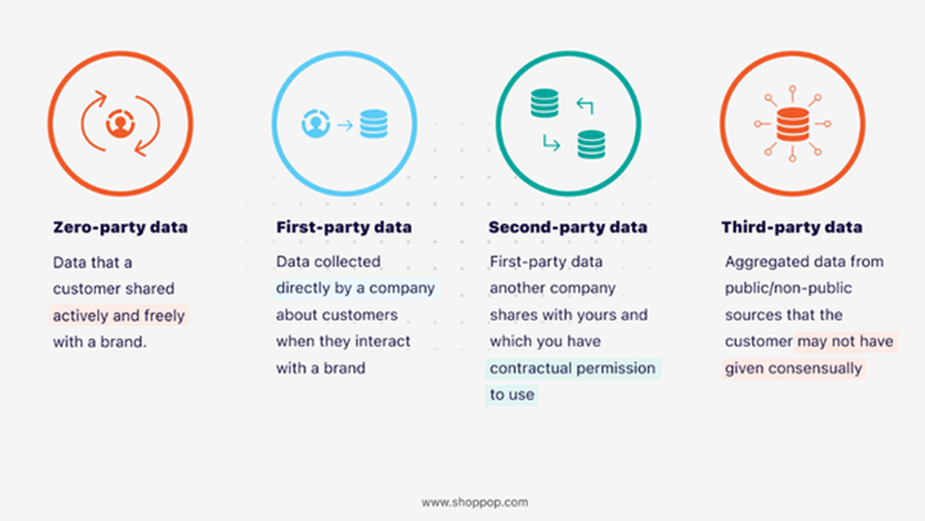
The Forgotten CRM Data Source: Second-Party

We’ve heard a lot about customer data collection lately due to the deprecation of third-party cookies and tighter privacy regulations. The primary focus has been on maximising the scale of zero and first-party data, but many forget a crucial missing piece: the value of second-party data.
Let’s start by defining each.
How can Marketers use second-party data?
1. Increase Data Scale
Zero and first-party data is very valuable, but it can lack scale. Third-party data has scale but can be of questionable quality. Second-party data is a more reliable way to expand reach and grow audiences without giving up data quality.
2. Enrich Your Existing Data
Second-party data can enhance your zero and first-party data. It can be used to refine targeting and expand personalization to reach those more likely to be interested in your products or engage with your content. For example, a storage company has a partnership with a real estate firm and purchases their data about prospective home buyers. The storage company can then append that data to their existing customers and promote more timely and relevant marketing messages.
3. Reach New Audiences
Second-party data can be helpful if you want to expand to new customers and markets. In an effort to gain younger buyers, Buick worked with Amazon’s Alexa voice assistant to drive inquiries about Buick SUVs. This brought 150,000 people to Buick’s virtual vehicle showroom.
So how do you acquire second-party data?
The process of acquiring second-party data differs from how you would acquire third-party data. You have direct interaction with the organization that owns the data, whereas third-party data is purchased from a data aggregator, sometimes leading to questionable data quality.
Having direct contact with the seller ensures that you are acquiring high quality data. You connect with the seller, agree on the terms to acquire the data that is most relevant to you then exchange the data. A data exchange marketplace, such as AWS Data Exchange and Oracle Data Marketplace, can also be used to help connect you with companies that offer second-party data.
A data clean room is recommended to procure second-party data. Clean rooms provide a secure environment for two or more parties to bring data together with governance rules in place. There are third-party providers with products such as LiveRamp Safe Haven, Snowflake, and Epsilon PeopleCloud Prospect that will host this type of environment between brands. Then there are providers that have set up clean rooms to share their own wealth of customer data, like Google Ads Data Hub, Amazon Marketing Cloud, and Disney Data Clean Room.
Benefits of using second-party data
• You can rely on the quality and accuracy of the data, as you know where it’s coming from
• Compared to third-party data, you have more control and flexibility during the transaction process to ensure you only purchase the data that is most pertinent to your goals
• Has many of the same benefits as zero and first-party data, and provides insights that you can’t get from your own data
• Purchasing directly from sellers can help build mutually beneficial relationships with other companies
What else should I consider?
• Verify the recency of the data and make sure you see a preview or sample before acquiring
• Ensure organizations you are purchasing from are compliant with data collection rules and regulations
• Plan for how you will integrate second-party data based on your data systems
• You may need to acquire data from multiple partners in order to effectively use second-party data
In conclusion, with decreased reliance on third-party cookies, second-party data is of growing importance. It can help fill the gaps to expand your audience, enrich existing customer data, and enhance personalization in your marketing campaigns.
Andrea Arricale, associate director, marketing operations and Amanda Peterson, manager, marketing operations, Digitas













